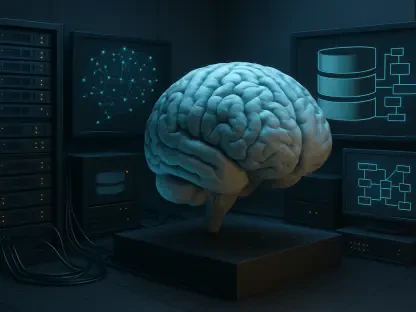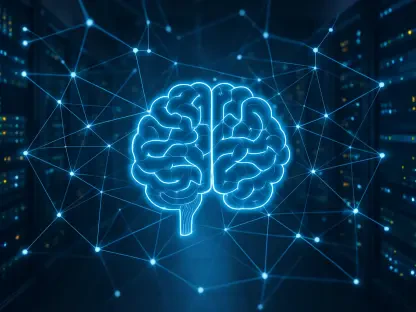Matilda Bailey is a Networking Specialist who focuses on the latest technologies and trends in cellular, wireless, and next-gen solutions. In this interview, Matilda shares insights on how AI and Zero Trust Security are redefining the landscape of cybersecurity.
How has AI altered the landscape of cybersecurity, especially regarding traditional perimeter defenses like firewalls and VPNs?
AI has significantly changed cybersecurity by making traditional perimeter defenses like firewalls and VPNs less effective. These conventional defenses operate on predefined rules and static configurations, which AI-driven threats can easily bypass. AI can automate reconnaissance, vulnerability exploitation, and evasion techniques, making these attacks faster and more sophisticated. That’s why we need more dynamic and adaptive security solutions such as Zero Trust Security that can keep up with AI’s pace.
In what ways are AI-driven threats, such as automated phishing campaigns and deepfake social engineering attacks, creating more risks?
AI-driven threats like automated phishing and deepfake social engineering attacks are becoming more prevalent and dangerous. These threats can analyze vast amounts of data to craft highly personalized and convincing scams. For instance, AI can generate deepfake representations of executives to deceive employees into revealing sensitive information or transferring funds, making these attacks very effective.
What is the concept of Zero Trust Security, and why is it becoming a critical approach to cybersecurity in the AI era?
Zero Trust Security operates on the principle of “never trust, always verify.” It assumes that threats can come from both outside and inside the network, so it continuously verifies every user and device trying to access resources. This approach is critical in the AI era because AI-powered attacks can lurk within networks, making it imperative to validate and authenticate all access requests dynamically.
How does AI contribute to the strength of Zero Trust Security?
AI significantly strengthens Zero Trust Security through continuous authentication, risk-based access control, and autonomous threat detection. AI uses behavioral biometrics and other patterns to continuously verify users, ensuring that only legitimate access is granted. It dynamically calculates risk scores based on user behavior and adjusts access permissions in real-time, improving security without compromising user experience.
How does AI-enhanced micro-segmentation help prevent unauthorized lateral movement within a network?
AI-enhanced micro-segmentation divides the network into smaller, secure segments to prevent unauthorized lateral movements. AI monitors traffic in real-time and detects any unusual interactions. For example, if an employee’s compromised account tries to access HR data, AI can block this action, containing the potential threat and preventing further damage.
What are the capabilities of AI in autonomous threat detection and response?
AI excels in detecting anomalies before breaches occur and responding to threats quickly. It can analyze large volumes of data to identify patterns of suspicious activity and contain threats in real-time. For instance, if AI detects an unauthorized attempt to copy sensitive data, it can automatically quarantine the compromised account, block the action, and alert security teams.
Despite advances in Zero Trust Security, AI-powered attackers are finding ways to breach defenses. What are some of the most advanced techniques used by attackers?
AI-powered attackers use advanced techniques like AI-powered evasion methods and adversarial AI attacks. These techniques mimic legitimate user behaviors to avoid detection and feed false data to AI models to trick them into ignoring real threats. This makes it challenging for traditional security models to distinguish between normal and malicious activities.
How can Zero Trust Security frameworks further evolve to counteract advanced AI-powered threats?
To counter sophisticated AI-powered threats, Zero Trust Security frameworks need to evolve by incorporating self-learning AI systems and automated incident response mechanisms. Self-learning AI systems can adapt to new attack patterns autonomously, while automated incident response can rapidly mitigate threats without human intervention. Predictive threat intelligence can also help in anticipating future attacks and preparing defenses accordingly.
What is the importance of maintaining a symbiotic relationship between AI and Zero Trust?
The relationship between AI and Zero Trust is crucial for creating a robust cybersecurity defense. Adaptive, AI-driven security measures ensure that systems can keep up with evolving threats and provide a proactive approach to security. This symbiosis enhances the ability to predict, detect, and respond to cyber threats more effectively.
Why is it essential to adopt the Zero Trust mindset in today’s cybersecurity landscape?
Adopting the Zero Trust mindset is critical in today’s cybersecurity landscape because threats are increasingly sophisticated and can come from any direction. The principle of “assume nothing, verify everything” ensures that every access request is scrutinized, eliminating blind trust and significantly reducing the risk of breaches. By continuously validating all interactions, organizations can stay ahead of the threat curve and maintain a strong security posture.
Do you have any advice for our readers?
Stay informed about the latest cybersecurity trends and continuously update your security practices. Embrace the Zero Trust mindset and make use of AI-driven security solutions to keep your defenses adaptive and resilient against evolving threats. Always verify every access request and remain vigilant in securing your digital assets.









